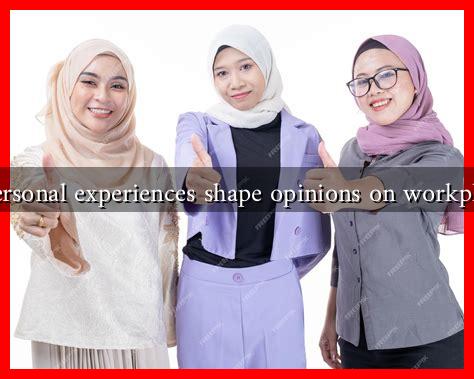-
Table of Contents
How Do Personal Experiences Shape Opinions on Workplace Hijabs?
The hijab, a traditional headscarf worn by many Muslim women, has become a focal point of discussion in workplaces around the world. Opinions on the hijab can vary significantly based on personal experiences, cultural backgrounds, and societal norms. This article explores how these factors influence perceptions of workplace hijabs, drawing on case studies, statistics, and personal narratives to provide a comprehensive understanding of the topic.
The Cultural Context of Hijabs
Understanding the cultural significance of the hijab is crucial in shaping opinions about its presence in the workplace. For many Muslim women, wearing a hijab is a deeply personal choice tied to their faith and identity. However, in non-Muslim-majority countries, the hijab can be viewed through various lenses, including:
- Religious Freedom: Many see the hijab as a symbol of religious expression and personal autonomy.
- Gender Equality: Some argue that the hijab can be a tool of oppression, while others view it as a form of empowerment.
- Workplace Diversity: The presence of hijabs in the workplace can be seen as a reflection of a diverse and inclusive environment.
Personal Experiences and Their Impact
Personal experiences play a significant role in shaping opinions about workplace hijabs. These experiences can range from direct interactions with hijab-wearing colleagues to broader societal narratives. Here are some key factors that influence these opinions:
- Direct Interaction: Individuals who have worked alongside hijab-wearing colleagues often develop a more nuanced understanding of the hijab’s significance. Positive interactions can lead to greater acceptance and support.
- Media Representation: The portrayal of hijab-wearing women in media can shape public perception. Positive representation can foster understanding, while negative stereotypes can perpetuate bias.
- Education and Awareness: Educational initiatives that promote cultural competence can help dispel myths and foster a more inclusive workplace environment.
Case Studies: Real-World Examples
Several case studies illustrate how personal experiences shape opinions on workplace hijabs:
- The UK’s Employment Tribunal: In a landmark case, a British Muslim woman was awarded compensation after being dismissed for wearing a hijab at work. This case highlighted the importance of accommodating religious practices in the workplace and influenced public opinion on the hijab.
- Corporate Policies: Companies like Nike and Uniqlo have embraced diversity by incorporating hijab-friendly uniforms. This move not only supports their employees but also resonates positively with consumers, showcasing how personal experiences can lead to corporate change.
- Social Media Movements: Campaigns like #HijabDay encourage individuals to wear a hijab for a day to foster understanding and empathy. These initiatives often lead to increased awareness and acceptance of hijabs in various settings.
Statistics and Surveys
Statistics reveal the complexities surrounding opinions on workplace hijabs. A 2020 survey by the Pew Research Center found that:
- Approximately 60% of Americans believe that wearing a hijab should be a personal choice.
- In contrast, 40% expressed discomfort with the hijab in professional settings, often citing concerns about professionalism and cultural differences.
These statistics underscore the divide in opinions and highlight the need for ongoing dialogue and education about cultural practices in the workplace.
Conclusion: The Path Forward
Personal experiences significantly shape opinions on workplace hijabs, influenced by cultural context, direct interactions, media representation, and education. As workplaces become increasingly diverse, fostering an environment of understanding and acceptance is essential. By promoting dialogue and awareness, organizations can create inclusive spaces where all employees feel valued and respected, regardless of their attire.
In summary, the hijab is more than just a piece of clothing; it represents a complex interplay of identity, culture, and personal choice. As society continues to evolve, so too must our understanding and acceptance of diverse expressions of faith and identity in the workplace.
For further reading on the topic, you can explore resources from the Pew Research Center and other organizations dedicated to promoting diversity and inclusion.

